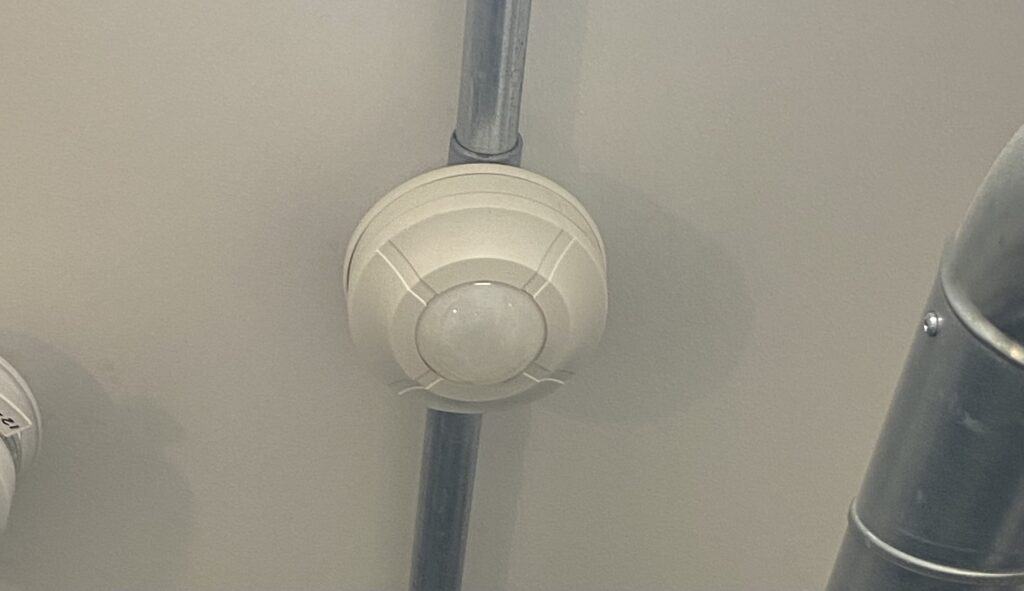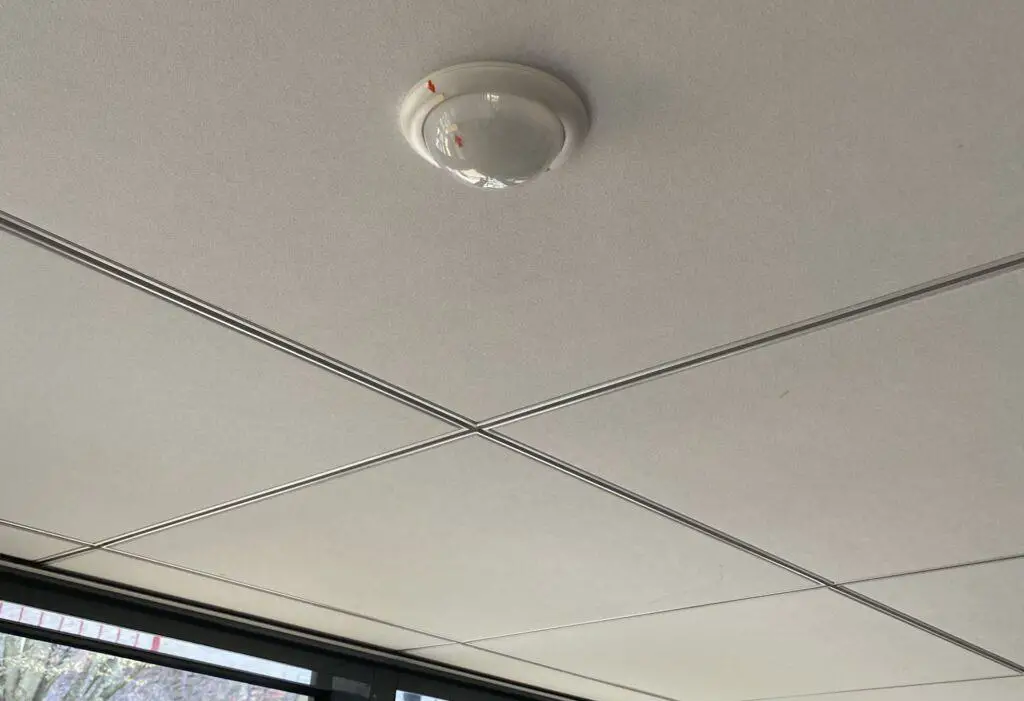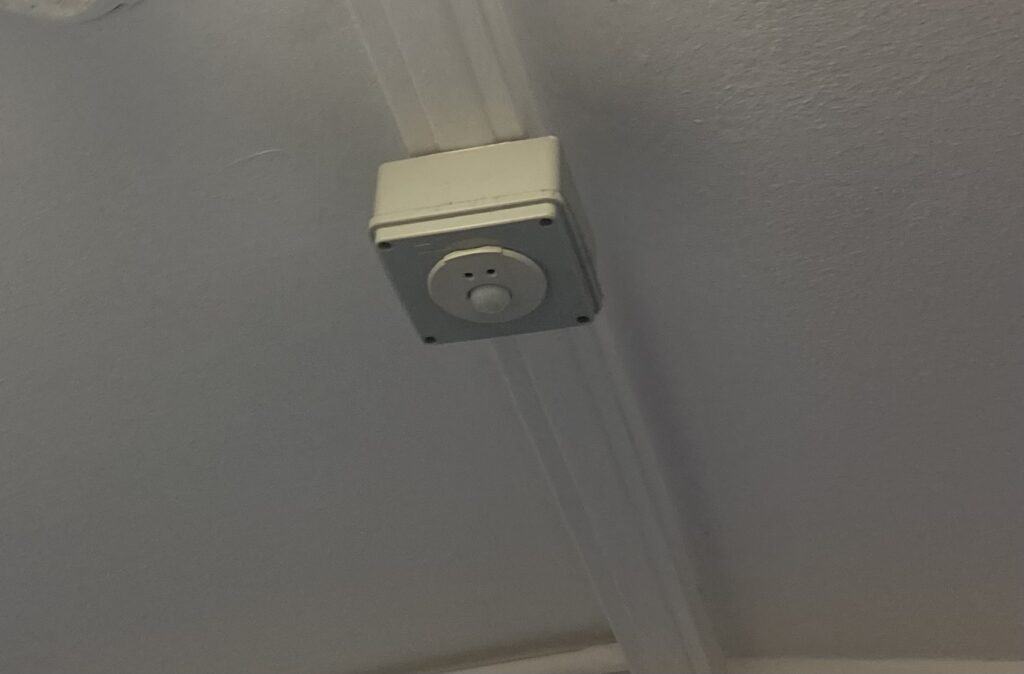Photocells are the traditional workhorse of lighting control. The technology has been around for ages (invented all the way back in 1883) which gives them the robustness needed to work outdoors over long periods.
Although technology has moved on, with the wide use of smart lighting, I am still a huge fan of using the humble photocell and I don’t think it is an option that should be overlooked.
So, should you control outside lights with a photocell? This post will give a few of the situations I would install a photocell, highlight some of the drawbacks I have come across and also provide a few alternative options.

Controlling outside lights with a photocell is a great option if you want a simple robust solution to automated lighting control. The simplicity that makes them great, can also be their biggest drawback, but there are some workarounds available.
A Brief Photocell Introduction
I’m guessing if you’ve landed on this post you know what a photocell is, but for those who don’t, a quick recap.
We use photocells in lighting control because the photocell is able to measure the ambient light levels so when it gets dark, the photocell triggers the lights to switch on automatically. As an electrician, my component-level understanding is limited so I turned to good old sciencedirect.com.
“A photocell operates on semiconductor photoconductivity: the energy of photons hitting the semiconductor frees electrons to flow, decreasing the resistance.”
sciencedirect.com
I still find it pretty impressive that we can easily make lights switch on automatically when it gets dark, especially when we consider how cheap they are (one on Amazon will set you back hardly anything). Perhaps that’s the electrician nerd in me.
So, if photocells make lights work automatically at night, should we be using them on all our outside lights? Unfortunatly not. There are lots of positives but also a few unavoidable negatives.
Good Reasons to Use a Photocell to Control Exterior Lights
Perhaps the number one reason for using a photocell on lights is the convenience factor. This is most evident with streetlights in most urban areas. They are usually photocell controlled.
The alternative of having someone manually switch the lights on wouldn’t be many steps removed from the 1900s when “lamplighters” used to go around and manually light all the street lamps!
Aside from the obvious drawbacks of specific people going around switching lights on and off, the major benefit of photocells when compared with using a timer to carry out the same task, is that there is no need to constantly be adjusting the timer as the evenings get lighter.
With all the clock changing, jumping forward or backwards and dusk getting earlier or later depending on the time of year, this would be a real pain to keep up with.
It’s the same story with exterior lights at home. By using a photocell, the lights are automatically adjusted to the different times of nightfall, which is a pretty energy-efficient way to operate.
The table below sums up some of the other benefits of using a photocell to control outside lights.
Benefits of Using Photocells to Control Outside Lights
| Convinience | Saves a lot of trouble manually switching lights on and adjusting timers to factor in different daylight hours. |
| Energy Efficiency | Ensures lights are only on when needed. |
| Security | Even if we are away on holiday, the exterior lights will still illuminate, which can help deter burglars. |
| Longer Lifespan | Convenience |
| Aesthetics | Having lights automatically turn on still looks pretty cool |
| Robust | By keeping the illumination time of lights to a minimum, we are prolonging their lifespan. |
As I touched on earlier, I also like to use photocells as they are generally quite hardy and simple to install. As they are effectively a switch, the wiring is simple, plus many lights come with photocell sensors built in (such as this good quality exterior light on Amazon) making installation even easier.

Some Negatives of Using Photocells to Control Exterior Lights
In my experience, the biggest negative of using photocells to control lights is the lack of control. I know I’ve just talked about how great all this automation is but it comes at a cost.
A photocell automatically switches on when it’s dark – which is great. The downside is that it doesn’t switch off again until it gets light. Why is this a problem? It’s not ideal because most people don’t want the lights to be on all night only during the evening when they are active.
If we only use a photocell, the lights will be on at 1,2,3 in the morning, when the majority of people are asleep and the lights being on is just a waste of energy and contributes to the already excessive light pollution urban areas create.
There is a simple solution to this problem though, and that is to fit a timer in the lighting circuit alongside the photocell. By doing this, the lights will still automatically activate at nightfall, but the timer can be set up to override the photocell and switch the lights off at a set time.
If you live in an area where the streetlights all switch off at say 1 am, this is likely the installation set-up of the timer and photocell working together described above.
Below is a table showing the drawbacks when it comes to using a photocell to control outdoor lighting.
Drawbacks of Photocells to Control Outside Lights
| Limited Control | Genrally the lights are either On or Off and other methods, such as timers, are needed alongside to increase control |
| Weather | Generally, the lights are either On or Off and other methods, such as timers, are needed alongside to increase control |
| Placement | Placement is key. Photocells needed to be positioned where they can receive natural light. If positioned in shaded areas, they will trigger when not needed. |
| Installation costs | Having a photocell installed is best done by an electrician and this incurs a cost. Many exterior lights do come with inbuilt photocells though, which does make it easier. |
What makes a photocell great, the robust and reliable technology, also accounts for its biggest drawback. In a world of smart lighting, we are getting used to limitless lighting control at the touch of a button, which is sadly something the trusty old photocell can’t compete with.

Alternatives to Using a Photocell to Control Exterior Lights
If you’ve decided that perhaps using a photocell isn’t the route you want to go down to control your lights, there are a few other options at your disposal.
I decided the simplest way to present the alternatives to photocells was in the table form below, with simple pros and cons of each.
Alternatives to Using Photocells to Control Outside Lights
| Alternative to Photocell | Pros | Cons |
|---|---|---|
| Timers | Traditional and reliable technology. | Wiring can be tricky and requires an electrician. |
| Manual Switches | Simple and reliable. | It’s easy to forget to switch lights on or off. |
| Motion Sensors | Energy efficient, as lights are only activated when needed. | Can be tricky to set up correctly resulting in unwanted activations. |
| Solar Powered Lights | Cheap and easy to install – no wiring needed | Often unreliable and a bit gimmicky/plastic looking. |
| Smart Home Lighting | Unlimited lighting control options | More expensive and technical – not a good solution for those who like to keep things simple. |
Hopefully, that has helped you decide if photocell control is the best route to go down when it comes to lighting control. One avenue that is worth exploring in my opinion is motion-controlled lighting and there is tons more info as they can be a game changer when it comes to home automation. A good place to start would be this article, Are Motion Sensor Lights Worth It?

